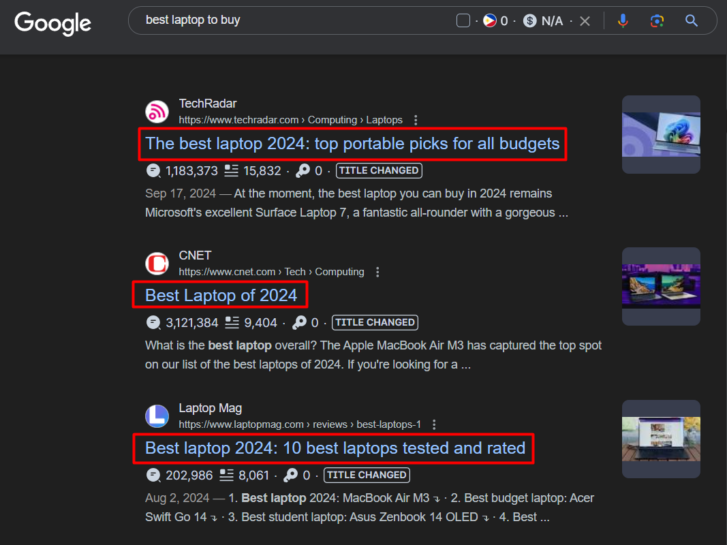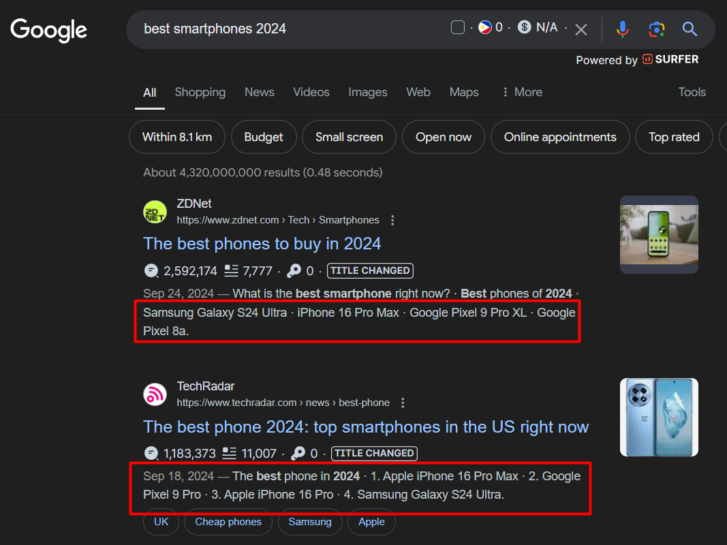You may have Googled something in the past and seen articles just published in the last few hours at the very top. If you publish articles of your own, you may even have wondered how these other websites managed to achieve this with brand-new content. The answer to that is “Query Deserves Freshness (QDF),” which is designed to show the most recent, up-to-date content for trending topics and keywords.
Understanding when and how QDF affects search results can be a game-changer for your SEO strategy, ensuring that your content meets the needs of users actively seeking fresh updates.
I will break down what QDF is, why it’s critical for staying ahead in search rankings, and how you can use it in your content marketing efforts.
What is Query Deserves Freshness (QDF)?
QDF is a search ranking system that Google uses to prioritize new posts or pages for search queries that demand for fresh information. It was created by Google for users that have questions requiring up-to-date answers.
Just think about this: if you are searching for the “best laptop to buy,” you sure would need the latest information, right?
Let’s see an example below:

As you can see, the results reflect the most current data, including the latest variants of laptops, even though my keyword doesn’t include “2024”.
That is why QDF is an important concept for business owners and marketers to understand, as it affects search visibility, engagement, and ultimately, your website’s profitability.
Why is QDF Important?
Users expect timely information at their fingertips. This demand drives the importance of QDF, making it essential for content creators to adapt successful content strategies.
In this scenario, user Intent plays the most significant role. Some search queries might be made by users who want evergreen, set-in-stone content – like if they Google “what is the capital of China,” for example. Other users might search for something new or dependent on trends.
For instance, a user types in “best smartphones 2024.” That person wants to find out the latest releases, and not products that were made two, three years ago. This is where QDF is applied, because it makes the retrieved results match the expectations as well as the needs of users.

Other than user intent, here are some other reasons why QDF is important:
Increased Visibility
One of the reasons fresh content is prioritized is that it positively impacts visibility on search engines. Algorithms favor fresh content, which plays a crucial role in optimizing your content for Google’s Helpful Content Update, helping to drive your rankings higher. This increased visibility leads to more organic traffic reaching your website, which is especially important for businesses that rely heavily on a strong online presence and effective digital marketing strategies.
Engaging Customers
Fresh, up-to-date content will keep your audience engaged. When you provide users with new information on products or services they’re interested in, then customers are most likely to return to your brand. And, regular updates is something users might be looking for. It’s why there are people who subscribe to newsletters from their favorite brands.
Remaining Competitive
Hopping on trends is a must for companies that want to stay relevant and well-known in a competitive market. When you write for QDF, it can help your content reach a broader audience and potentially attract new customers. Plus, trend-savvy businesses can differentiate themselves from competitors who are slower to react.
How Search Engines Determine Freshness
- Content Frequency: If the content on the site is updated often, then it is considered newer. You can add notes to inform users that your content was updated recently if you’ve revised or added new information to older posts. Make sure to submit any newly updated pages to your Google Search Console property for indexing, too.
- Publication Date: An important factor in this scenario is the date that an article was published or last updated. Newer articles tend to rank better for those queries needing fresh information.
- High Engagement: It can be in the form of shares, comments, and clicks, which indicates value to search engines. Recent content that increases blog engagement through these interactions is more likely to receive a boost in visibility.
- Patterns of Internal and External Linking: New content will be more likely to receive backlinks from other websites, which further helps notify the search engines about relevance and value.
Strategies for Creating Fresh Content
So, how can your next posts really capitalize on “Query Deserves Freshness”? Here are some practical tips:
- Content Calendar: Create a comprehensive content checklist with regular updates. This makes for consistency with fresh material flow as well as provides an opportunity for content planning based on seasons, events, or trends.
- User-Generated Content: Encourage your audience to share their experiences and opinions, as this not only provides fresh content but also helps build a stronger community. As you engage with your audience, consider incorporating local link-building strategies to further enhance your SEO and search rankings.
- Repurpose Old Articles: Update the old content using the latest statistics, draw new insights, or create additional information. It saves a lot of your precious time, yet you can preserve freshness and relevance in the content.
- Stay Updated on Trends: This would include reading through news issues concerning your industry, its trends, and pop culture issues on social media. The inclusion of trending topics with content really boosts freshness.
Key Takeaway
Understanding Query Deserves Freshness is crucial for anyone looking to excel in SEO and reap the benefits of blog writing and content marketing. By aligning your content strategy with any potential keywords which fall under QDF-driven search results, you can improve your chances of ranking higher in the search results page.
The post Understanding Query Deserves Freshness (QDF): Why Fresh Content Matters in SEO appeared first on SEO Services Agency in Manila, Philippines.













